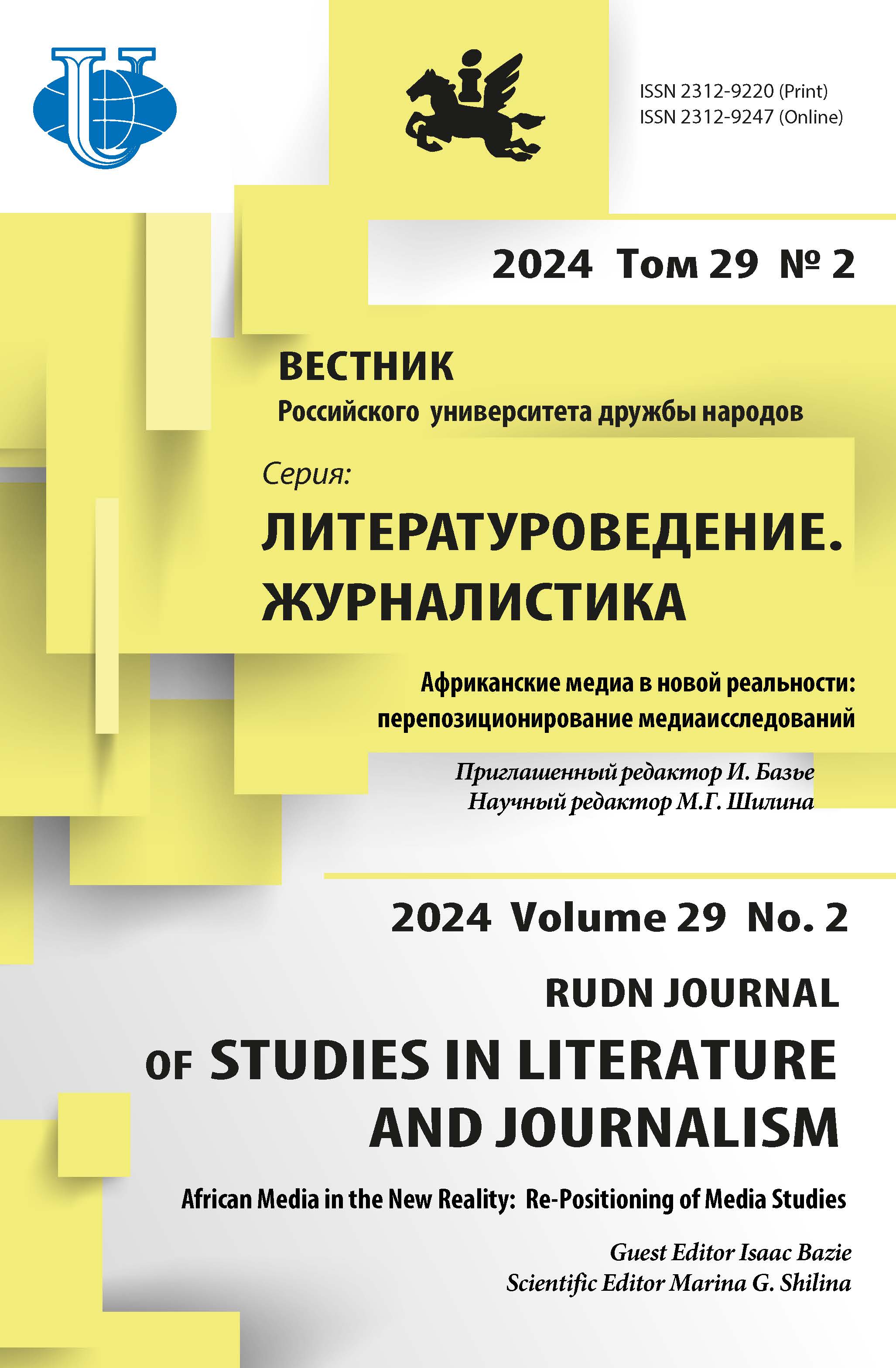КОММУНИКАТИВНАЯ СТРАТЕГИЯ ВЕРБАЛЬНОГО УБЕЖДЕНИЯ В РОССИЙСКОЙ ТЕЛЕВИЗИОННОЙ РЕКЛАМЕ
- Авторы: Мирошниченко Г.А.1
-
Учреждения:
- Российский университет дружбы народов
- Выпуск: Том 23, № 2 (2018)
- Страницы: 215-223
- Раздел: Журналистика
- URL: https://journals.rudn.ru/literary-criticism/article/view/18787
- DOI: https://doi.org/10.22363/2312-9220-2018-23-2-215-223
Цитировать
Полный текст
Аннотация
В статье анализируется коммуникативная стратегия вербального убеждения в российской телевизионной рекламе. Особое внимание уделяется специфике речевых высказываний, выявлению коммуникативных приемов, речевых тактик, характерных лексико-грамматических конструкций, применяемых в речевом воздействии на потребителя. Коммуникативная стратегия вербального убеждения раскрывается на примерах рекламной продукции телевизионной коммерческой рекламы. Сегодня телевизионная реклама занимает наибольший медиасегмент на российском рекламном рынке. В сложившихся экономических реалиях бренды все больше применяют коммуникативную стратегию вербального убеждения, что делает актуальным изучение способов ее реализации. Исследование позволяет сделать вывод о том, что вербальное убеждение есть эффективная коммуникативная стратегия, мотивирующая вовлечение в потребление.
Об авторах
Галина Анатольевна Мирошниченко
Российский университет дружбы народов
Автор, ответственный за переписку.
Email: mirosh2150@yandex.ru
кандидат философских наук, доцент, доцент кафедры массовых коммуникаций филологического факультета Российского университета дружбы народов. Научные интересы: психология рекламы, дискурс массовых коммуникаций
Российская Федерация, 117198, Москва, ул. Миклухо-Маклая,10/2Список литературы
- Дмитриева Л.М. Приемы убеждения и аргументации в рекламе. URL: https: //works.doklad. ru/view/3Ehy99l_YVk.html (дата обращения: 11.12.2017).
- Еникеев М.И. Общая и социальная психология: учебник. М.: Норма; ИНФРА, 2016. 640 с.
- Лебедев-Любимов А.Н. Психология рекламы. СПб.: Питер, 2006. 384 с.
- Мирошниченко Г.А. Новые тенденции в создании телевизионного рекламного контента // Вестник Российского университета дружбы народов. Серия: Литературоведение, журналистика. 2015. № 3. С. 122-127.
- Пищерская Е.Н. Роль вербальных и визуальных компонентов баннерной рекламы в реализации стратегии убеждения // Вестник Иркутского Государственного университета. 2012. Т. 1. № 17. С. 59-64.
- Рекламная деятельность [Текст]: учебник для студентов вузов / Ф.Г. Панкратов, Ю.К. Баженов, Т.К. Серегина [и др.]. М.: Дашков и К°, 2002. 364 с.
- Суммарный объем рекламы в средствах ее распространения за первые 3 квартала 2017 года. URL: http://www. akarussia.ru / (дата обращения: 1.01.2018).
- «ТВ-аудитория: кто и как смотрел телевизор в 2015 году. URL: http://www.totalview.ru/ tv-auditoriya-kto-i-kak-smotrel-televizor-v-2015-godu/ (дата обращения: 02.02.2016).
- Феофанов О.В. Виды рекламного психологического воздействия: убеждение. 2 марта 2008 г. URL: http://advertion.blogspot.ru/2008/03/blog-post_556.html#.WquR3qBWokQ (дата обращения: 11.12.2017).
- Юровский А.Я. Природа современного телевидения: учебник. Телевизионная журналистика / ред. Г.В. Кузнецова, В.П. Цвина, А.Я. Юровского [и др.]. М.: Изд-во Моск. ун-та; Наука, 2005. 368 с.
















